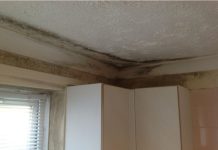The NHS Elective Reform Plan aims to tackle the 7.5 million waiting list backlog by introducing new surgical hubs and community diagnostic centres (CDCs). This article explores how offsite construction can provide a radical building approach to ensure the plan’s success
In a bid to tackle the NHS’ 7.5 million waiting list backlog of, the government has announced its Elective Reform Plan.
Boosting capacity and convenience
In order to boost convenience for patients and increase capacity for appointments, these reforms will introduce new surgical hubs and community diagnostic centres (CDCs) on high streets, open 12 hours a day, 7 days a week. This comes as part of the government’s Plan for Change, which intends to deliver for working people.
The Elective Reform Plan is a positive development for the NHS, and if successfully implemented, it will bring many benefits, such as creating up to half a million more appointments each year and offering greater patient choice over follow-up care.
The government also hopes to save another million missed appointments through better use of technology, such as the updates to the NHS app that were announced shortly after the Plan. The ideas are there; it’s just a matter of delivering the ambitious targets that have been outlined, as the public and industry experts raise concerns about the health service’s capacity to achieve these goals.
Addressing diagnostic needs
CDCs are set to be placed in convenient locations such as shopping centres to boost convenience for patients, improve earlier diagnosis and reduce pressure on hospitals. Increasing accessibility to health services is especially beneficial for people with disabilities or elderly people who are more likely to use health facilities more regularly. Additionally, in rural areas where resources are limited and access to healthcare facilities is sometimes more difficult, people will benefit from accessing more appointments closer to home.
However, only 10% of CT and MRIs are done in CDCs, indicating a significant opportunity to drastically improve diagnostic numbers and reduce waiting times.
Regarding the proposed new surgical hubs and CDCs, careful considerations must be made regarding the best infrastructure decisions. The Plan needs to be rolled out fast to start making steps towards achieving ambitious targets, so it’s vital for the government to implement the best building practices.
The case for offsite construction
Where speed, flexibility, and cost-effectiveness are crucial, alternative building practices such as offsite construction could be the answer. These practices offer high-quality, compliance-ready buildings that can be delivered quickly. Utilising these practices would help mitigate concerns about the pace and volume required to achieve the government’s goals and take positive steps towards achieving targets.
In an organisation like the NHS, where needs constantly evolve, the ability to adapt is vital. Offsite construction, particularly modular, is made fit for purpose and allows buildings to remain flexible for future needs; the shell can stay the same, but the interior walls can be restructured, meaning an examination room can be converted into an office space later down the line. The buildings’ scalability, adaptability and cost-effectiveness make them ideal for use at NHS facilities. Solutions can also be long-term, with the ability to be added to existing buildings in a matter of weeks.
With the NHS announcing its new waste strategy late last year, sustainability goals remain a key consideration for the health service when making decisions. It’s, therefore, key to adopt a building solution that contributes to, rather than hinders, the NHS’ green agenda.
Offsite construction means buildings that already adhere to compliance laws can be easily replicated, which not only reduces embodied carbon emissions but also applies the principle of circular economy, whereby materials are reused and repurposed. The NHS needs a solution that is not only fast and flexible but also environmentally friendly, so it’s key for decision-makers to consider these benefits.
High-quality modular buildings are already being used by the NHS across the country. In fact, the NHS has been utilising modular facilities for years, with a notable output during the pandemic. The health service has also publicly declared its hunt for firms to partner with to provide a £2.6 billion modular building framework, indicating the service’s existing trust in the industry.
The introduction of new surgical hubs and community diagnostic centres at the heart of the Elective Reform Plan is a promising step towards streamlining the NHS’ operations and enhancing the patient experience. Whilst the targets that have been laid out are ambitious, they should be achievable, especially if pace, quality and affordability are factored into decision-making from the outset.











